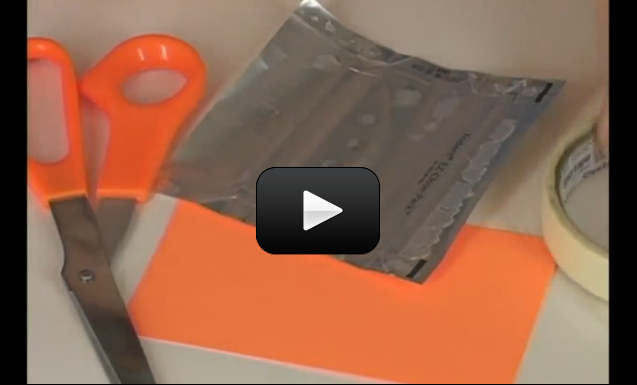If you can remember thermostats before they went ‘digital’, then you may know about bi-metallic strips – a piece of material made from of two strips of different metals which expand at different rates as they are heated (usually steel and copper). The result is that the flat strip bends one way if heated, and in the opposite direction if cooled.
Normally, it takes serious skill and a red-hot torch to stick two different metals together, but here’s a homemade version of this concept that your kids can make using your freezer. Here what you do:
Please login or register to read the rest of this content.


In this experiment, the paper actually remains very close to the same length in warm and cold temperatures. That’s because the fiber structure of paper prevents it from changing. However, the metal strip contracts (gets smaller) in cold temperatures and expands (gets longer) in warm temperatures. Colder temperatures cause the molecules in the metal to slow down, which slightly reduces the space between them…causing the size of the metal strip to contract. The opposite occurs in warmer temperatures.
Hi, great experiment! However, can you please explain why the metal foil shrinks faster than the paper. Does it have to do with specific heat or am I thinking about the wrong thing? What is the specific heat of paper and the aluminium foil? I assume it is aluminium foil. Thanks. :)!
Never mind! I tried it and it worked! It was really cool to watch the paper curl while I was watching it! 🙂
Do you think that I could just tape together a piece of aluminum foil and paper to make my bimetallic strip?
Thank you! We put on top of a space heater, and could see the wrapper moving. After a few minutes, we put it in the freezer, and after checking an hour or so later, didn’t notice any change. It was obvious the heat was affecting it, though, so it was fun to see that.
Hmmm… without seeing your setup, I can suggest trying something first: Put the gum wrapper in a really warm place, like in a sunny window or near a heater and then look at the position. Now stick it in the coldest part of the freezer and see if that has any effect on it. I know it’s getting harder to find foil gum wrappers anymore!
I couldn’t find a regular gum wrapper, but we used the outer wrapper from a pack of gum. Its foil on one side and slick paper on the other. After having it in the freezer all night, the wrapper was still straight. I’m not sure if this didn’t work because we used the wrong kind foil/paper combo? Any suggestions?
I could not find a gum wrapper so I tried a Muenster dog food bag strip. I flattened it out and stuck it in the freezer. Before I could even close the door, I saw it closing up and with in 5 minutes it was a verry tight roll.